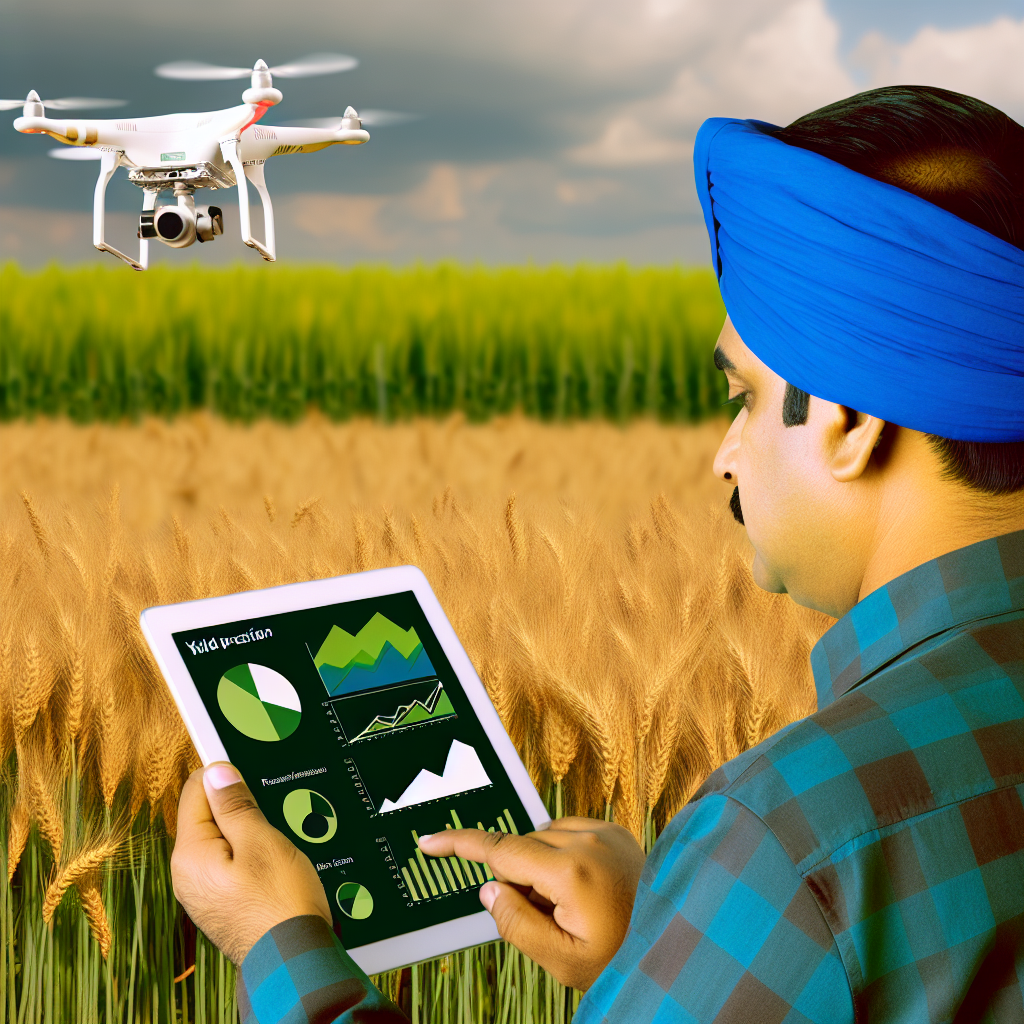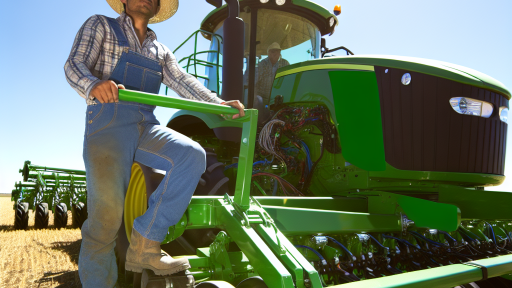Introduction to Data Analytics in Farming
Data analytics plays a crucial role in modern farming practices.
Using data effectively allows farmers to make informed decisions.
In recent years, the agricultural sector has embraced digital transformation.
Advanced analytics tools lead to improved yield and resource management.
Farmers can now harness data from various sources for actionable insights.
Additionally, these tools enhance productivity and profitability.
The Importance of Data-Driven Decisions
Data-driven decisions minimize risks in farming operations.
They help identify patterns that can affect crop production.
By analyzing previous seasons’ data, farmers can optimize their practices.
Moreover, data insights can guide the selection of crops and planting times.
Technological Advancements in Agriculture
Innovative technologies have transformed agricultural methods substantially.
Technology allows for real-time monitoring of crop health.
Tools such as drones provide aerial views of fields.
Satellite imaging also helps in assessing land conditions.
These technologies facilitate precise farming practices.
Transform Your Agribusiness
Unlock your farm's potential with expert advice tailored to your needs. Get actionable steps that drive real results.
Get StartedFuture of Farming with Data Analytics
The future of farming is deeply intertwined with data analytics.
Farmers will increasingly rely on data to adapt to changing conditions.
Integrating artificial intelligence will enhance predictive analytics.
This will lead to further efficiency in farming techniques.
Ultimately, data analytics helps farmers achieve sustainability goals.
Overview of Benefits of Data Analytics for Farmers
Optimization of Crop Yields
Data analytics significantly enhances crop yield optimization.
Farmers can analyze soil data to determine crop compatibility.
This process allows for targeted crop selection based on specific conditions.
Consequently, farmers produce more with less, maximizing their resources.
Enhanced Decision-Making
Data-driven insights lead to better decision-making processes.
Farmers can use historical weather patterns to forecast crop performance.
Additionally, analyzing market trends helps in setting competitive prices.
This proactive approach reduces risks related to farming uncertainties.
Resource Management
Effective use of data assists in resource management.
Farmers can monitor water usage and apply it more efficiently.
Moreover, data analysis helps in managing fertilizer and pesticide applications.
Ultimately, this results in cost savings and reduced environmental impact.
Increased Efficiency
Analytics contributes to operational efficiency across the farm.
For instance, precision agriculture utilizes real-time data for field operations.
This technology ensures timely interventions and minimizes waste.
Farmers save both time and money, enhancing their overall productivity.
Risk Mitigation
Data analytics plays a crucial role in risk mitigation.
Farmers can assess potential threats by analyzing data trends.
This includes monitoring plant diseases and pest infestations.
Showcase Your Farming Business
Publish your professional farming services profile on our blog for a one-time fee of $200 and reach a dedicated audience of farmers and agribusiness owners.
Publish Your ProfileBeing proactive reduces losses and enhances resilience against challenges.
Essential Data Analytics Tools for Precision Agriculture
Introduction to Data Analytics in Agriculture
Data analytics enhances agricultural productivity and sustainability.
It leverages technology to optimize farming practices and resource usage.
Farmers can make data-driven decisions for better yields.
Satellite Imaging Services
Satellite imaging provides valuable insights into crop health.
Farmers can monitor growth patterns and predict yields effectively.
Services like Planet Labs offer high-frequency images for real-time analysis.
This technology helps identify issues early, reducing losses.
Soil Moisture Sensors
Soil moisture sensors play a crucial role in precision irrigation.
They provide real-time data on moisture levels in the soil.
Farmers can adjust irrigation schedules to match crop needs.
Accurate readings help conserve water and optimize yields.
Farm Management Software
Dedicated farm management software streamlines operations.
Programs like Trimble and AG Leader offer comprehensive solutions.
These tools assist with everything from crop planning to inventory management.
They also help track financial performance and profitability.
Yield Monitoring Technologies
Yield monitors provide insights into harvest performance.
Farmers can analyze data to understand yield variability.
These tools help identify the best-performing areas of the farm.
Consequently, farmers can apply targeted improvements for future seasons.
Drones for Precision Agriculture
Drones are revolutionizing data collection in agriculture.
They can capture high-resolution images of crops and fields.
Drones help assess plant health and monitor changes over time.
Furthermore, they facilitate accurate application of pesticides and fertilizers.
Predictive Analytics Tools
Predictive analytics tools forecast future trends in farming.
Software such as IBM Watson Agriculture uses big data for analysis.
These tools help farmers anticipate crop diseases and market demands.
As a result, farmers can plan better and reduce risks.
Mobile Applications for Field Data Collection
Mobile apps make data collection convenient for farmers.
Applications like FieldView and AgriSync enable real-time data entry.
Farmers can monitor various parameters from their smartphones.
This immediate access empowers quick decision-making in the field.
Importance of Data Integration
Integrating various data sources enhances overall analysis.
Farmers benefit from a comprehensive view of their operations.
Tools that support integration facilitate collaboration among farm managers.
Ultimately, this leads to improved productivity and sustainability.
You Might Also Like: Precision Agriculture: Improving Soil Health and Productivity
Case Studies: Successful Implementation of Data Analytics in Farming
Precision Agriculture at GreenField Farms
GreenField Farms successfully implemented data analytics to enhance yield projections.
They utilized satellite imaging to monitor crop health throughout the season.
This allowed them to address issues promptly and optimize resource usage.
Showcase Your Farming Business
Publish your professional farming services profile on our blog for a one-time fee of $200 and reach a dedicated audience of farmers and agribusiness owners.
Publish Your ProfileAs a result, they recorded a 15% increase in overall crop yield.
Additionally, the analysis of soil data helped them determine the best crops for their land.
Livestock Management Innovations at Sunny Acres Ranch
The farm employed wearable technology to track animal health and behavior.
By analyzing the data, they reduced veterinary costs by 20% over two years.
Furthermore, they tailored nutrition plans to meet the specific needs of their livestock.
This approach led to healthier animals and improved meat quality.
Weather Data Utilization at Hilltop Orchards
Hilltop Orchards incorporated weather analytics to optimize fruit production.
They used historical weather data to predict frost vulnerabilities during bloom time.
This forecasting enabled them to implement protective measures effectively.
Consequently, they decreased frost damage and improved fruit quality.
The orchards also adjusted harvesting schedules based on rainfall and temperature predictions.
Discover More: Remote Sensing Technologies for Organic Farmers
How to Choose the Right Data Analytics Tool for Your Farm
Assess Your Farming Needs
Identify your specific farming operations and goals.
Determine the types of data you need to analyze.
Consider your current technology and equipment.
Evaluate the scale of your farming activities.
Explore Available Tools
Research various data analytics tools available in the market.
Look for software that specializes in agriculture data analytics.
Examine user reviews and testimonials from other farmers.
Compare features between different tools to find matches.
Evaluate Costs and ROI
Analyze the costs associated with each tool.
Consider initial investments versus ongoing expenses.
Calculate the potential return on investment for your farm.
Identify any hidden costs, such as training or upgrades.
Consider User-Friendliness
Choose tools that are easy to navigate and use.
Look for software with customer support and training options.
Assess whether the tool integrates with your existing systems.
Seek tools that require minimal technical expertise.
Test Before Commitment
Utilize free trials or demos offered by analytics providers.
Gather feedback from your team on usability and functionality.
Conduct small-scale tests to assess effectiveness.
Make adjustments based on results and user input.
Stay Updated and Adapt
Keep abreast of new technologies and tools in agriculture.
Be open to evolving your approach based on data insights.
Regularly review tool performance and effectiveness.
Adjust your strategies as your farm’s needs change.
Learn More: Integrating Remote Sensing into Farm Management

Integrating Data Analytics with Existing Farm Management Software
Importance of Integration
Integration boosts efficiency in farm operations.
It enables seamless data flow between platforms.
Showcase Your Farming Business
Publish your professional farming services profile on our blog for a one-time fee of $200 and reach a dedicated audience of farmers and agribusiness owners.
Publish Your ProfileThis approach enhances decision-making processes.
Moreover, it reduces the likelihood of data silos.
Choosing the Right Software
Select software that aligns with your farm’s needs.
Consider user-friendly interfaces for ease of use.
Look for software with comprehensive analytics capabilities.
Additionally, prioritize systems that offer robust support.
Steps for Effective Integration
Start by assessing your current farm management software.
Identify potential integration points for data analytics.
Next, configure the software to support real-time data sharing.
Train staff on using the new integrated system.
Finally, continuously monitor and optimize the integration.
Benefits of Using Integrated Systems
Integrated systems provide real-time insights into operations.
They improve predictive analytics for better resource management.
Additionally, they streamline communication across teams.
This fosters a culture of data-driven decision-making.
Real-World Examples
Green Acres Farm utilizes integrated platforms for better yields.
Sunrise Agriculture has improved operational transparency through integration.
Both examples illustrate the positive impact on productivity.
Find Out More: Improving Livestock Management Through Data
Future Trends in Data Analytics Tools for Agriculture
Advancements in Precision Agriculture
Precision agriculture continues to grow rapidly among farmers.
Farmers increasingly adopt technologies that analyze field variability.
These advancements help optimize input usage and enhance yields.
Drone technology is becoming more prevalent in farm assessments.
They provide real-time data and aerial imagery of crops.
Additionally, satellite imagery offers valuable insights into crop health.
The Rise of AI and Machine Learning
Artificial intelligence is transforming agricultural practices.
Machine learning algorithms analyze large datasets efficiently.
This technology predicts crop performance and disease outbreaks.
Farmers can make data-driven decisions using these insights.
Moreover, machine learning continuously adapts to changing conditions.
Integration of Internet of Things (IoT)
The Internet of Things plays a crucial role in modern farming.
IoT devices collect data from various sensors in real-time.
Farmers can monitor soil moisture, temperature, and crop health easily.
This data facilitates timely interventions and resource management.
Furthermore, IoT applications simplify farm management tasks.
Enhanced Data Visualization Tools
Data visualization tools are essential for effective decision-making.
Farmers utilize these tools to interpret complex data easily.
Graphs and dashboards present key performance indicators clearly.
Such visualizations enable quick assessments of farm operations.
Furthermore, accessible visual data enhances collaboration among teams.
Showcase Your Farming Business
Publish your professional farming services profile on our blog for a one-time fee of $200 and reach a dedicated audience of farmers and agribusiness owners.
Publish Your ProfileGrower Collaboration Platforms
Collaboration platforms are emerging to connect farmers and experts.
These spaces help share insights and best practices across communities.
Farmers benefit from collective knowledge and shared resources.
Additionally, platforms foster innovation through collaborative projects.
This network ultimately enhances overall farm productivity.
Best Practices for Training and Using Data Analytics Tools on the Farm
Understanding the Importance of Training
Training staff on data analytics tools enhances productivity.
It fosters a culture of informed decision-making across the farm.
Moreover, well-trained employees adapt more quickly to new technologies.
Selecting the Right Tools
Choose data analytics tools suited to your specific agricultural needs.
Consider tools that integrate seamlessly with existing systems.
Testing various options helps identify the best fit for your workflow.
Implementing Effective Training Programs
Develop structured training programs for all employees.
Utilize hands-on training to engage users actively.
Encourage peer learning through workshops and group sessions.
Promoting Continuous Learning
Encourage ongoing education and skills development.
Offer access to online courses and resources for staff members.
Regularly update training materials to reflect new features and functionalities.
Establishing Clear Objectives
Set clear goals for using data analytics tools on the farm.
Objectives help measure success and identify areas for improvement.
Review progress periodically to stay aligned with goals.
Encouraging Collaboration and Feedback
Promote a culture where employees can share insights and suggestions.
Use surveys and feedback sessions to gather input on tool usability.
Incorporating feedback can enhance the training process significantly.
Measuring Success and Impact
Utilize metrics to evaluate the effectiveness of data analytics tools.
Track performance improvements and financial outcomes post-implementation.
Regular assessments help fine-tune strategies and tool selections.
Leveraging External Expertise
Consider hiring consultants for specialized training sessions.
External expertise can provide fresh perspectives and strategies.
Networking with industry professionals brings valuable insights.
Additional Resources
AI in Agriculture and Farming: Revolutionizing Crop Growth – Intellias
Census of Agriculture – USDA – National Agricultural Statistics Service




